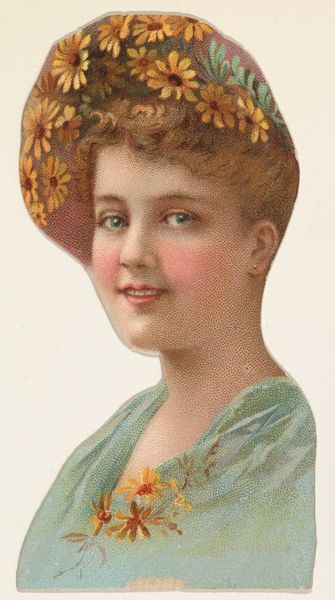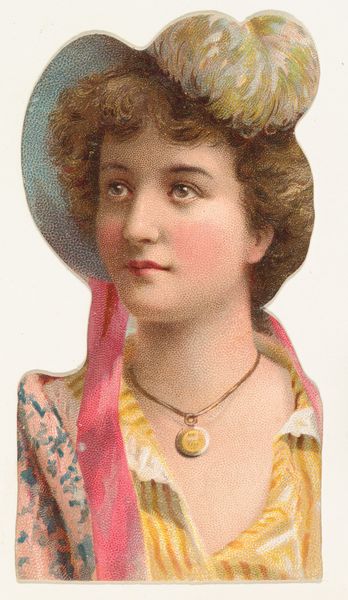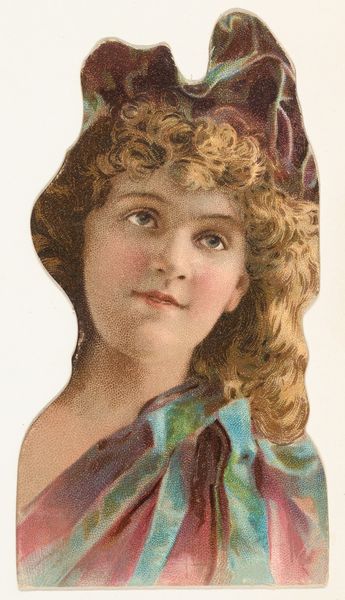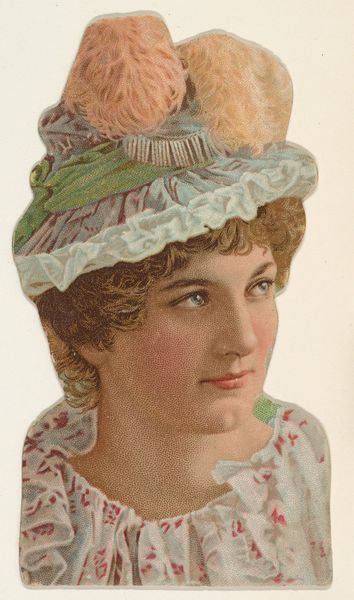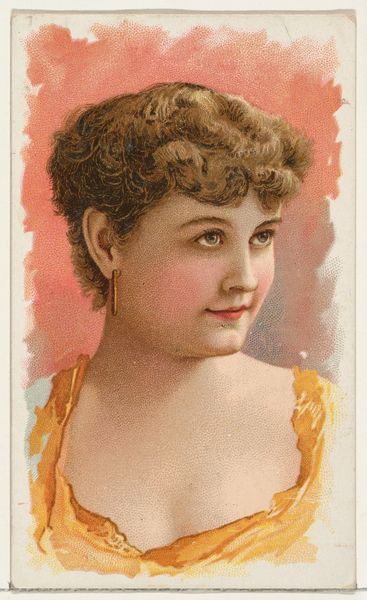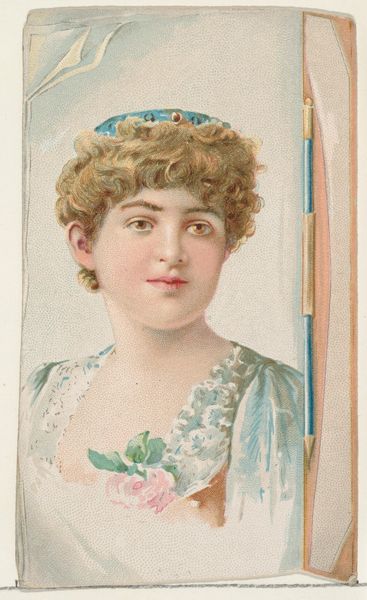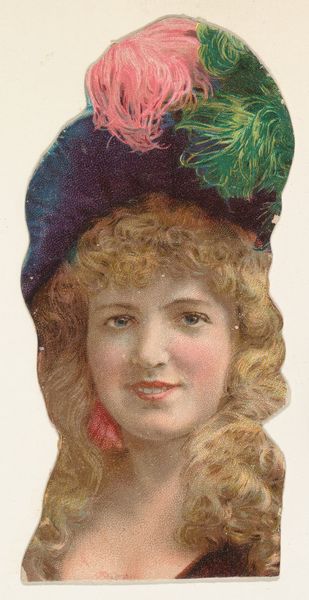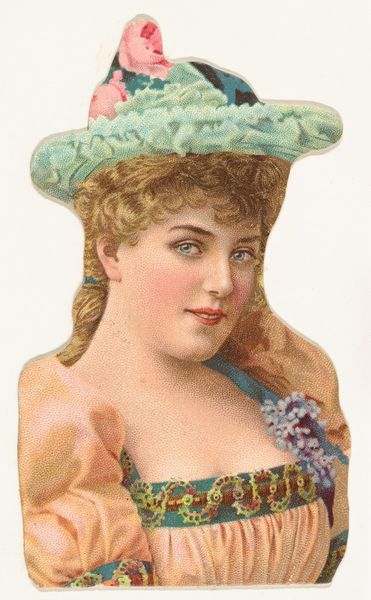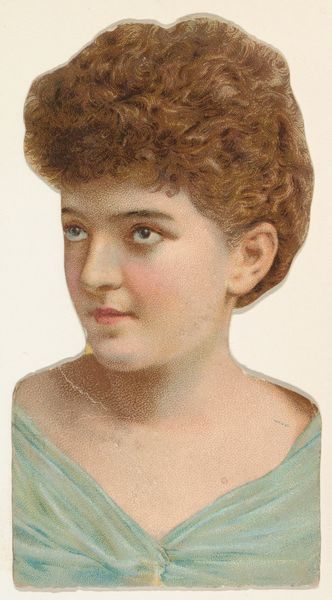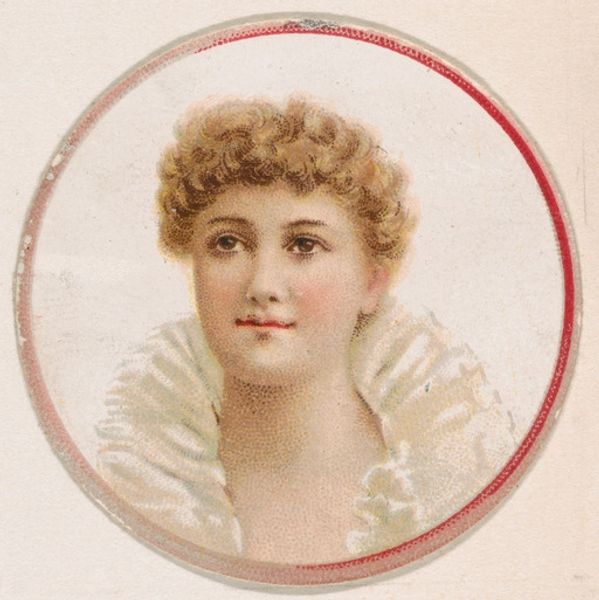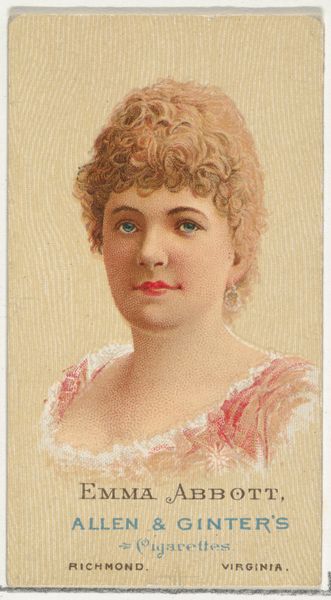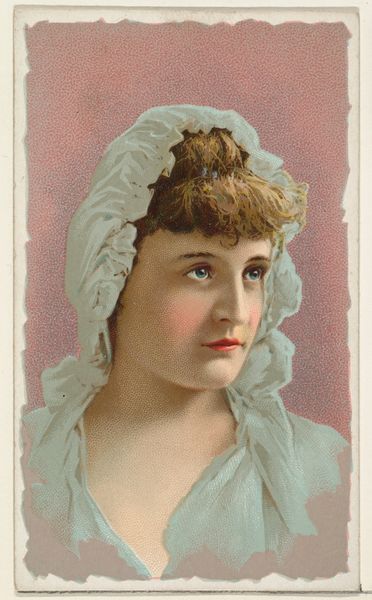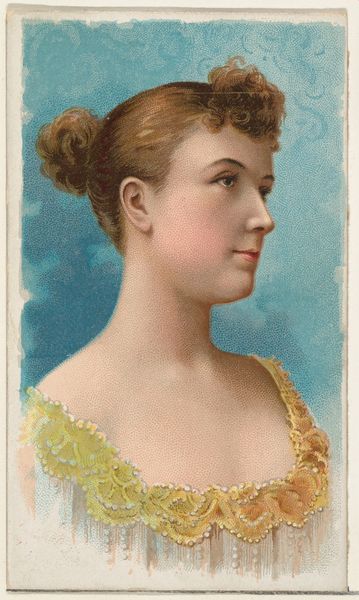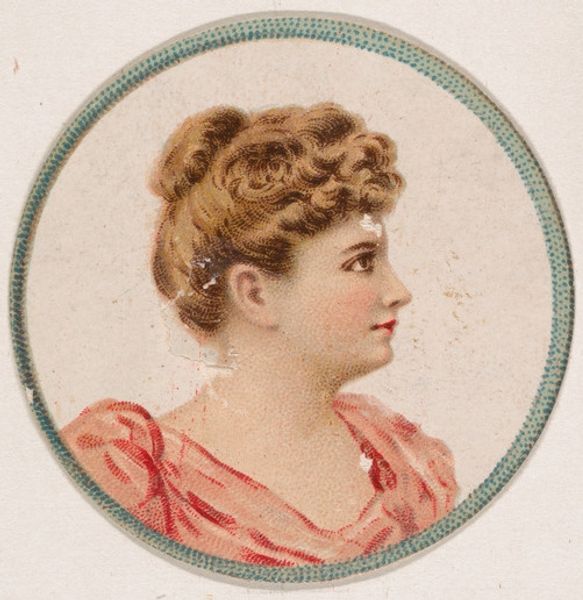
Actress wearing blue and yellow unstructured hat, from Stars of the Stage, Fourth Series (N132) issued by Duke Sons & Co. to promote Honest Long Cut Tobacco 1892 - 1893
0:00
0:00
Dimensions: Sheet (Irregular): 3 13/16 × 2 1/16 in. (9.7 × 5.3 cm)
Copyright: Public Domain
Editor: This is "Actress wearing blue and yellow unstructured hat," a print from 1892-1893 by W. Duke, Sons & Co. The actress’s gaze seems distant. What symbolism can you find here? Curator: Indeed. Let's consider how hats functioned as potent symbols in that era. It’s not just adornment, but a visual marker of social status and personal expression, perhaps even rebellion against social expectations. Does the hat itself remind you of anything? Editor: Hmm, maybe it's a reference to her stage persona? Actors often transform to embody different characters. Curator: Precisely. Costume plays a critical role, so consider how this flamboyant hat might signify a departure from her everyday identity. The use of vibrant colors, too – blue and yellow – might connote specific emotions or personality traits valued on stage. In the Victorian period, flowers held nuanced meaning; did these colors share similar hidden cultural significance? Editor: It's like a mask, but worn in plain sight, suggesting duality. Also, I hadn’t really thought about the colors holding secret meanings! Curator: Such portrait cards allowed fans to feel a tangible connection to the stars they admired, turning a commodity - tobacco - into something intertwined with aspirations and dreams of a different life. These cards became collectable tokens, a popular pastime in the late 19th Century, indicative of the democratization of portraiture. Editor: It’s fascinating how much meaning can be embedded within what appears to be a simple portrait. I see the actress, but also a glimpse into the dreams of a bygone era. Curator: Exactly. And by studying these symbols, we begin to understand the shared cultural memory they evoke. It truly makes us question: what symbols define *our* era?
Comments
No comments
Be the first to comment and join the conversation on the ultimate creative platform.
